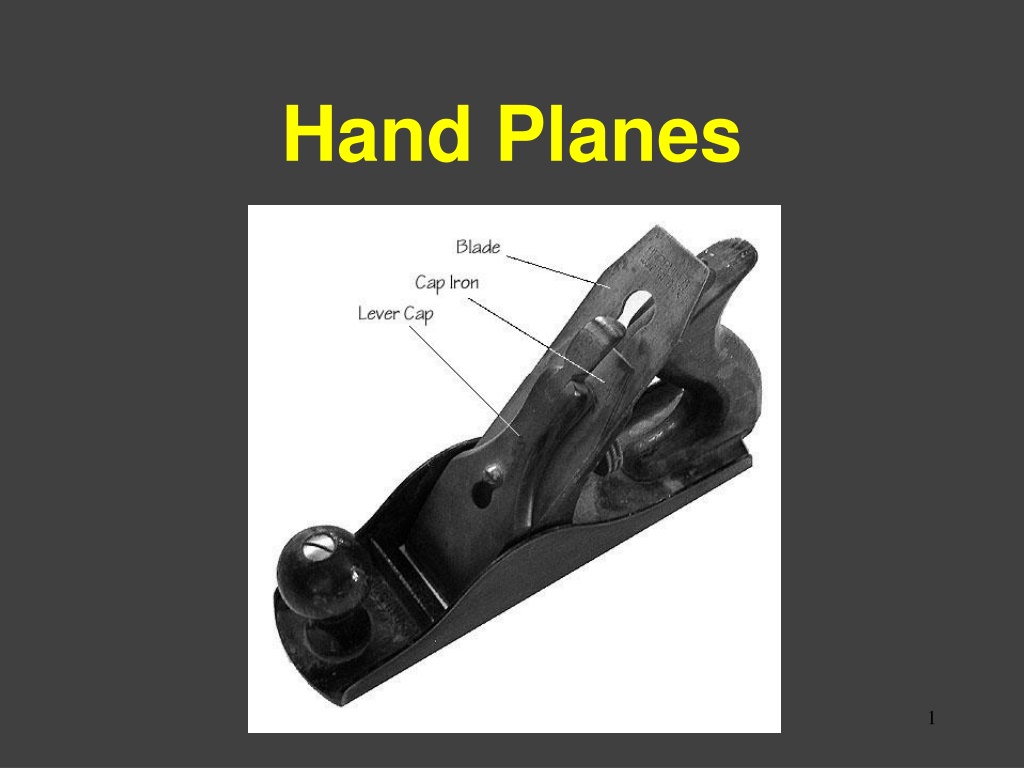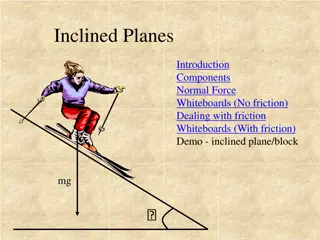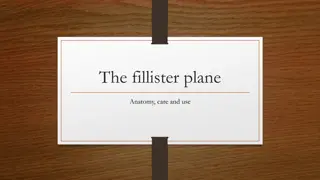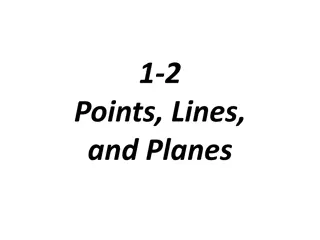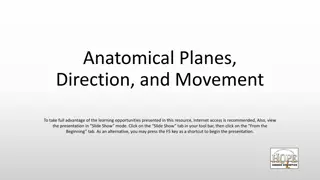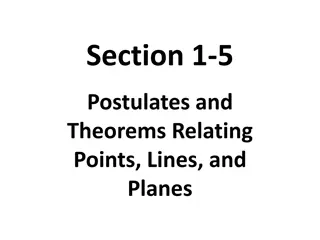Hand Planes
Hand planes are traditional woodworking tools used to flatten, thin, and smooth wood surfaces. Learn about the history, types, and safe practices of hand planes in woodworking. Explore the different types of hand planes and how to use them effectively for a professional finish. Understand the hazards associated with hand planes and ensure safe work practices for a successful woodworking experience.
Download Presentation

Please find below an Image/Link to download the presentation.
The content on the website is provided AS IS for your information and personal use only. It may not be sold, licensed, or shared on other websites without obtaining consent from the author.If you encounter any issues during the download, it is possible that the publisher has removed the file from their server.
You are allowed to download the files provided on this website for personal or commercial use, subject to the condition that they are used lawfully. All files are the property of their respective owners.
The content on the website is provided AS IS for your information and personal use only. It may not be sold, licensed, or shared on other websites without obtaining consent from the author.
E N D
Presentation Transcript
Hand Planes A hand plane is commonly used in woodworking to make wood flatter, thinner, and smoother. The tool consists of a sharpened edge, or cutting blade, attached to a firm body. The cutter, also referred to as a sole, is set at a fixed angle. This angle, when rubbed across the wood, eliminates imperfections and rough patches and leaves a smoother, flatter surface. Hand planes are relevant to construction primarily in residential work and wood furniture manufacturing. 2
History of Hand Planes Hand planes are known to be thousands of years old, originating in Medieval Europe and Asia. Ancient Rome is also credited with a similar tool. Leonard Bailey invented the first modern hand plane in the mid 1860 s. Bailey s plane was later modified by Stanley Rule and Level. The company began mass producing the planes in common use today. 3
Types of Hand Planes The parts of modern hand planes include the following: the mouth, the lever cap, the iron, depth knob, lateral adjustment lever, cap iron, handle, finger rest knob, and the frog. There are various types of planes today, including: scrub planes, jack planes, jointer planes, smoothing planes, and polishing planes. More recently, handheld power planers have been introduced to the industry. 4
Using Hand Planes Planing should always be done along the grain of the wood. This should cause thin shavings to rise from the plane, leaving a smoother, flatter surface. When planing is done against the grain of the wood, a rough, jagged finish known as a tearout is left behind. This technique is also known as traverse or transverse planing. Planing becomes a bit trickier at the edges of the wood being planed. Low angle planes, typically 12 degrees, are used in this situation. 5
Hand Plane Fatalities and OSHA Regulations There have been no known fatalities involving hand planes, nor are there any specific OSHA Regulations dealing with their use. 6
Hand Plane Hazards The hand plane is a very simple tool. Safe use can be ensured with a few basic instructions. The blade of a hand plane is very sharp and can become hazardous when used improperly. When using a plane, always push away from the body and in a direction with the grain. 7
Safe Work Practices of Hand Planes Never lose track of the location of the sharpened blade. Be sure to keep the stabilizing hand away from the path of the blade. Be sure to store the plane in a safe location to eliminate the chance of a child being cut with the blade. Also make sure the blade cannot fall onto a victim and cut them. Gloves should be worn to avoid potential splinters or cuts from using the plane. 8
Think Safety Work Safely 9
